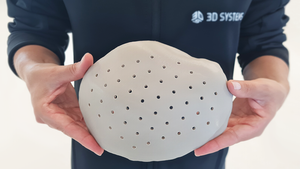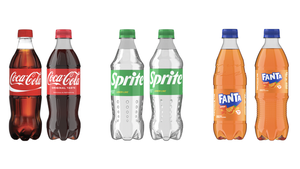July 13, 1999
|
This series of articles is designed to help molders understand how a few analytical tools can help diagnose a part failure problem. Michael Sepe is our analyst and author. He is the technical director at Dickten & Masch Mfg., a molder of thermoset and thermoplastic materials in Nashotah, WI. He has provided analytical services to material suppliers, molders, and end users for the last 10 years. He can be reached at (414) 369-5555, Ext. 572. |
Stress cracking is one of the most common problems associated with field failures in plastic products. One estimate from the Rubber & Plastics Research Assn. (Rapra) in the United Kingdom states that in nearly one-third of all failed plastic applications the problem is stress cracking. Other anecdotal data from experienced plastic part designers tends to echo this testimony. Why is it so hard to predict when this problem will occur and why is it so difficult to diagnose when it does present itself?
Solvent or Environmental?
The problem lies, in part, in the definition of stress cracking. In general this problem falls into two subcategories: solvent stress cracking and environmental stress cracking. Often we tend to group all the problems into the environmental category, but in reality most of the field problems we see have to do with solvent stress cracking. In both cases, the problem is characterized by a failure that occurs when a stress and a particular chemical are present in an application simultaneously. Remove either the stress or the chemical and the problem disappears.
When we observe stress crack problems we usually hear the same refrain from the unwitting victim. "We checked the chemical resistance data on this material and there should be no problem." Some variation on this theme is always the defense when stress cracking is mentioned as a possible culprit. The problem is that most chemical resistance tests involve bringing a standard specimen such as a flex bar or a tensile bar into contact with a gas, liquid, or solid chemical agent. The molded part is of uniform nominal wall and has been molded under ideal conditions that do not produce high levels of molded-in stress. There are no sharp corners, no sudden changes in wall thickness, no intersecting ribs, and no weld lines. In other words, none of the items present in the real world is represented in the standard test specimen.
In addition, for most chemical resistance tests the part is simply placed into the medium; no stress is applied. This eliminates one of the two ingredients necessary for failure and guarantees that some materials that would fail a true stress crack test will pass the standard chemical resistance tests.
Environmental stress cracking refers specifically to a phenomenon observed in polyethylene. It is the tendency for polyethylene parts to fail prematurely in the presence of detergents, oils, and other active environments. It usually occurs at high levels of applied stress. It was first noticed in polyethylene wire coatings that were often lubricated to facilitate the feeding of cable through conduit. Polyethylene, when tested with these same lubricants in the laboratory, always passed. Yet field problems occurred rather rapidly. This behavior is a physical occurrence that does not involve swelling or other mechanical weakening of the material.
|
Figure 1. The sharp corner near the gate of this part created a failure point, while two thick bosses near the end of flow were prone to sink marks. A material change combined with some common-sense increases in corner radiuses was the solution to eliminating stress cracking. |
Solvent stress cracking, which is often (incorrectly) referred to as environmental stress cracking, can occur in almost any plastic. However, it usually occurs in amorphous thermoplastics. In this mechanism the solvent actually replaces polymer at the surface of the part. The bond between the polymer and the solvent molecule is weaker than the original bond between the polymer chains and does not contribute to the strength of the material. If the stresses either molded into the part or applied externally to the part exceed the strength of the weakened polymer, the material ruptures at the surface. Solvent then penetrates deeper and the cracks extend further into the product over longer time periods.
Aside from being difficult to predict or test for, stress cracking is particularly troublesome because the designer of the part cannot always foresee the full range of chemicals that the application will contact. And although the product development people can take steps to avoid designing in stress risers such as sharp corners and sudden changes in wall thickness, they cannot control the molded-in stresses that may become part of the product during the processing steps. Worse yet, stress cracking rarely appears immediately. It takes days, weeks, or even months to appear. This allows plenty of time for a substantial amount of product to reach the field before the problem is discovered.
The case studies involving stress cracking are plentiful. While there is always the common theme of a stress and a chemical agent, the detective work required to recognize the problem and track down the source is always unique. Table 1 lists some of the polymers most commonly involved in the problems. Without exception they are amorphous thermoplastics.
Unexpected Failure
Our first case study comes from a part molded in polysulfone. The part is essentially a cylinder that looks like two truncated cones connected at their narrow ends (see Figure 1). The material had been selected because of its excellent heat resistance and its ability to stand up to aqueous solutions of metal salts such as zinc chloride and silver nitrate. The system operated continuously at 200F. The combination of heat and moisture would have torn apart lower cost materials such as nylon, polyester, and polycarbonate.
Table 1: |
|
However, periodically the system was backflushed with xylene while the temperature remained elevated. According to the literature, the polysulfone would handle this exposure. But within a few months many of the parts were failing and the failures all followed the same pattern. The gate had been placed on a flange that projected from the cylinder wall. The radius between the flange and the nominal wall was virtually nonexistent and the cracks all started in this sharp corner at a location on the diameter closest to the gate.
To make matters worse, two thick bosses had been designed into the part near the end of flow. The pressures required to pack these areas out caused a lot of molded-in stress to build up in the part, especially near the gate.
In this case, a material change combined with some common-sense increases in corner radiuses was the solution. The parts were an opaque brown, so transparency was not an issue. The application was switched to a highly filled PPS with almost the exact shrinkage of the unfilled polysulfone. The semicrystalline PPS was far more resistant to the xylene. In addition, the high filler content produced a sink-free part without the need for high packing pressures. This, combined with the design improvements, saved the application.
Prone to Failure
Polycarbonate frequently appears in the role of stress crack victim. One survey performed by Rapra estimated that while polycarbonate makes up 1 percent by weight of the global consumption of plastic resin, it constitutes 10 to 15 percent of the case studies for field failures. This is not an indictment of polycarbonate. The problem arises in part from the impressive initial properties of the material. But there are a variety of factors that can attack the polymer over time. Many of these involve stress cracking.
A memorable case study in our files came from the world of outdoor applications. The parts in question were large strips made of a high molecular weight polycarbonate and pigmented white, yellow, orange, and red. The role of the parts is to mark roadsides in remote mountainous areas of U. S. highways where no guardrails have been installed. They are designed to let drivers know when they are getting too close to the edge of the cliff.
Some of these parts were coming back from the field snapped cleanly in two pieces. There was no shortage of theories regarding the cause of the problem. Degradation during processing and attack by ultraviolet radiation were ruled out by the melt flow test. The raw material typically was produced in the range of 5 to 6g/10 minutes; no molded part exceeded 6.6g/10 minutes. Pigment effects were thought to have a negative effect on toughness. But when the broken parts were brought back in from the field and tested for impact resistance, they passed with flying colors. (No pun intended.) Even when the tests were performed at temperatures designed to simulate the winter conditions of the western mountains, there was no indication of brittle failure in most of the product.
Our initial diagnosis was fatigue failure. Virtually all the failures occurred in winter when low temperatures and high winds combined to maximize the likelihood of failure. We have all seen footage of hurricanes where the traffic signs are whipping back and forth at a high rate of speed in a rhythmic fashion. Our assumption was that a similar whipsawing of these strips at high speeds in cold temperatures was resulting in fatigue failure.
Then we noticed that the failures always coincided with an ink stamp mark placed on each part to identify the date of manufacture. An analysis of the ink showed that it was based on methyl ethyl ketone (MEK), a solvent aggressive to polycarbonate. The external stress had been correctly diagnosed, but it is likely that without the addition of this seemingly harmless ink stamp, the parts would not have failed.
Next month, we'll review more case studies and look at ways to test for stress cracking before the application is launched. Material selection will also be discussed.
Use this link to read Part 2 of this article.
You May Also Like




